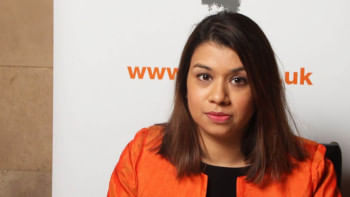Workers' database yet to come through
The BGMEA was looking for just 20 names from each of the five factories housed in Rana Plaza to provide compensation under its group insurance policy, but it could not find any.
There were no hard or soft documents that could give the identities of the 1,134 deceased workers from the industrial accident four years ago, which was amongst the worst the world has seen.
“We weren't getting even a single name,” said an official of the Bangladesh Garment Manufacturers and Exporters Association engaged with the process at that time.
This roused the garment sector's apex trade body to make a database of all employees working in its member factories.
But getting the factory owners on board with the idea seemed to be an uphill task: they were simply resistant to the prospect of investing time and money for the cause.
The BGMEA did take a similar initiative a year before the Rana Plaza disaster: it was particularly looking for the correct address and experience of the employees of its member factories.
“But the move did not see the light because of the factory owners' lack of awareness,” said Siddiqur Rahman, president of the BGMEA and the vice-president at the time of the Rana Plaza disaster.
Their plight in getting the 20 names from each factory housed at the Rana Plaza made them resolute in forming the biometric workers' database.
“Now all of our member factories have to come under the database. Otherwise, they will not get the benefits of the central welfare fund managed by the government,” Rahman said.
The welfare fund has been created with the sole money of the apparel exporters.
The amendment of the labour law in 2013 -- three months after the Rana Plaza incident -- has made it mandatory for the apparel exporters to contribute 0.03 percent of their export value to the fund, which would be used for giving insurance coverage to the workers.
From July last year, banks are deducting the amount from the apparel exporters as per the instruction of the government. In nine months, the fund has amassed $10 million (Tk 80 crore).
In case of injury or death for factory accidents, a worker will be given Tk 2 lakh and Tk 3 lakh as compensation respectively from the fund.
“The BGMEA will not extend any services, including issuing the Utilisation Declaration, to its member exporter unless he comes under the database,” Rahman said.
Utilisation Declaration is the permit needed for garment manufacturers to ship abroad.
As of now, 70 percent of the BGMEA's 3,079 active factories have signed up for the database, according to Ferdous Perves Bivon, vice-president of the BGMEA who is helming the project.
As of April 13, the software for the database has been installed in 1,750 of the factories.
The government will also have access to this database so that it can directly give the insurance benefits to the injured or dead workers, Bivon said.
“The database will be a bona fide information centre on workers,” Bivon added. Each worker will have a unique identification number and be given a biometric card, said Mahmud Hasan Khan, another vice-president of the BGMEA.
Khan went on to urge the knitwear manufacturers and exporters to come under the database as many BGMEA members have both woven and knit sections and their workers move from one factory to another.
“But the knitwear manufacturers have shown no interest yet,” he said.
A factory with 1 to 500 employees has to spend Tk 45,000 as fixed cost for installation of the software and training to its employees for management of the database.
The fixed cost will be Tk 55,000 for a factory with 501 to 1,000 employees and the highest ceiling has been set at Tk 150,000 for a factory with 10,000 plus employees.
The yearly fee, which would depend on the number of employees, from the 2nd year through to the 5th would be a minimum of Tk 15,000 and a maximum of Tk 45,000.

 For all latest news, follow The Daily Star's Google News channel.
For all latest news, follow The Daily Star's Google News channel. 



Comments